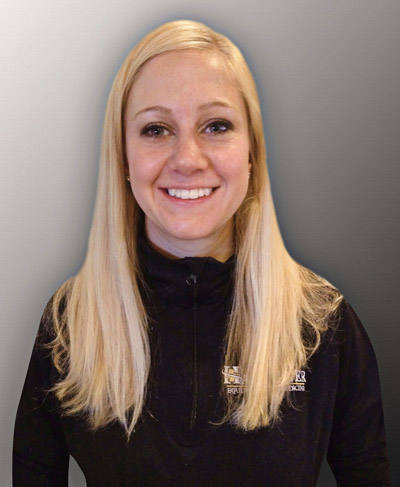 You saddle up for a normal day of riding or showing and find that your horse doesn’t feel like himself. He’s not moving or acting like he usually does. Is it a training issue or a physical issue?
You saddle up for a normal day of riding or showing and find that your horse doesn’t feel like himself. He’s not moving or acting like he usually does. Is it a training issue or a physical issue?
An equine sports medicine specialist is trained to diagnose the source of performance problems by evaluating one step at a time. First, the natural movement of the horse is observed while being ridden or longed. Next, a physical exam and upper/lower flexion test is performed to localize the general area of pain. Finally, your vet may perform a blocking exam or imaging to confirm the suspected problem and formulate a diagnosis. If multiple areas of pain are suspected, your vet may recommend an MRI or bone scan. Once a diagnosis is made, treatment is administered and a rehabilitation or reconditioning plan is put into place.
“My horse is cross cantering, especially in the turns”
This performance problem can be caused by pain in the back, the fetlock or the stifle. The most commonly seen source of pain for this type of problem is the sacroiliac joint or ligament. This is the area of the back where the sacral spine (sacrum) “sacro” attaches to a part of the pelvis called the ileum “iliac.” Although it is often referred to as the SI joint, it is not a true joint. The SI has no joint capsule or joint fluid. It is ligamentous attachment site between the sacrum and the ileum. The second most common area of pain to cause a horse to cross canter is the fetlock joint. The fetlock joint is often referred to as the “ankle.” The fetlock joint is located where the cannon bone (metatarsal) meets the long pastern bone (proximal phalanx). The third area commonly responsible for lead change related complaints is the stifle joint. The stifle is equivalent to the human knee. It is located where the femur meets the tibia and has a knee cap (patella). The stifle joint is one of the largest joints and is composed of three smaller ones (medial femorotibial, lateral femorotibial and femoropatella). One joint or a combination of all three joints may be inflamed and require treatment.
“My horse is heavy on the bit and won’t bend”
If your horse is reluctant to bend left and right or flex his neck, the problem can be a tricky one to diagnose. The most obvious and common place to start with is the horse’s mouth. Your vet will look for sharp enamel points on the outside of the upper teeth (maxillary arcade), on the inside of the lower teeth (mandibular arcade) or hooks at the very back of the horse’s mouth that are unable to be evaluated without the use of a speculum. The enamel points and hooks can cause painful ulcers on the cheeks and tongue. Once teeth and mouth are ruled out, your veterinarian will evaluate your horse’s neck for pain that can causes changes to a horse’s willingness to flex. The cervical spine (neck) consists of seven cervical vertebrae. Arthritis is commonly seen in sport horses between C4-C7. A series of radiographs can pinpoint the vertebrae that needs treatment. The third cause of a stiff horse is temporal mandibular joint pain (TMJ). Horses with TMJ pain may be unable or unwilling to flex vertically. This often begins as a subluxation of the TMJ joint that develops into arthritis. Since horses chew most of their day, this joint is often the most used and the most undiagnosed source of pain in horse’s body. If you feel that you need a stronger bit to get the job done, consider TMJ pain. This joint can be injected with cortisone and hyaluronic acid to relieve the pain and restore comfort.
“My horse is quick and short in his front end”
Have you ever ridden a horse that is quick and short in their front end? This problem is often described by a rider as “my horse isn’t holding the ground as long as he used to.” This issue is most often the result of pain in the coffin joint, the fetlock or the carpal canal. The coffin joint is located within the hoof capsule between the coffin bone (distal phalanx) and the short pastern bone (middle phalanx). This joint is greatly affected by hoof angle. Low heels or long toes will result in decreased space in the coffin joint. This decreased space causes the bones to touch, resulting in pain and swelling (effusion). A two-part approach will usually solve the problem. First, the mechanical problem has to be corrected by a qualified farrier (with the help of a few good radiographs to guide the way). Second, pain relief in the form of a therapeutic coffin joint injection with cortisone and hyaluronic acid will likely restore your horse’s normal stride. The second most common area leading to quickness is an inflamed fetlock joint. Depending upon the exact location of the fetlock pain, quickness off the ground may be more noticeable while jogging straight or during a turn. This is often resolved with a therapeutic joint injection of cortisone and hyaluronic acid.
——————
Dr. Roth grew up in North Carolina working with Quarter Horses. She earned a bachelor’s degree from North Carolina State University and DVM from Oklahoma State University. Dr Roth is finishing up an internship with Hassinger Equine Service and will stay on as an associate veterinarian. Questions, comments or suggestions can be e-mailed to Alison.roth@okstate.edu or writing to InStride Edition.



You must be logged in to post a comment Login